Introduction
In the field of food processing, industrial ice machines are used in supermarkets, restaurants and hotels, aquatic and meat processing, poultry slaughtering, etc. to ensure the quality and integrity of products.The preservation of perishable commodities is dependent on industrial devices that provide ice in accordance with various temperature norms that are particular to the sector. When purchasing an industrial ice maker, buyers are required to make a primary choice between air-cooled and water-cooled cooling systems as their primary source of selection.
The objective of this article is to provide an understanding of industrial ice machine systems by providing a detailed comparison of air-cooled technology and water-cooled technology in terms of power efficiency and environmental responsibility, as well as maintenance needs and operating possibilities for a variety of commercial applications. By doing an analysis of these characteristics, businesses have the ability to make more informed decisions.
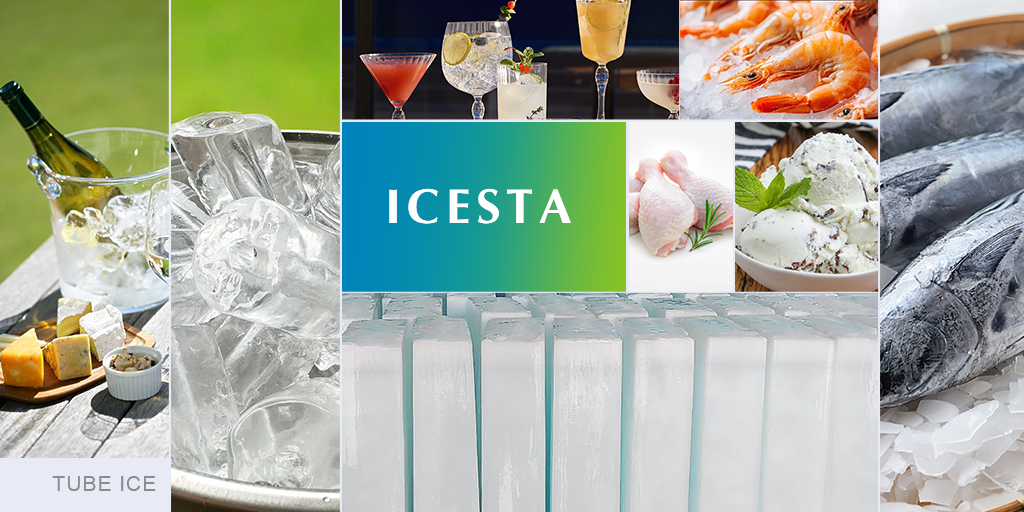
Understanding Ice Machine Cooling Systems
Ice machines remove the process heat by performing two distinct heat elimination operations.
Air-Cooled Ice Machines
Ambient air acts as the cooling source for air-cooled ice machines to cool condenser coils during the refrigerant absorption of ice-making heat. The heat escapes to the environment through fans that move air over the condenser coils. Operation of these machines follows the same principle as air conditioners by using air to maintain refrigeration rather than water. The equipment installation techniques are simpler and more cost-effective for these machines because they do not need supplies of water or cooling towers. Under hot ambient temperatures the cooling capacity of high efficiency systems decreases due to warmer air conditions. Air-cooled systems work efficiently when employed in regions featuring adequate ventilation and average temperature environments (Koeller & Hoffman, 2008).
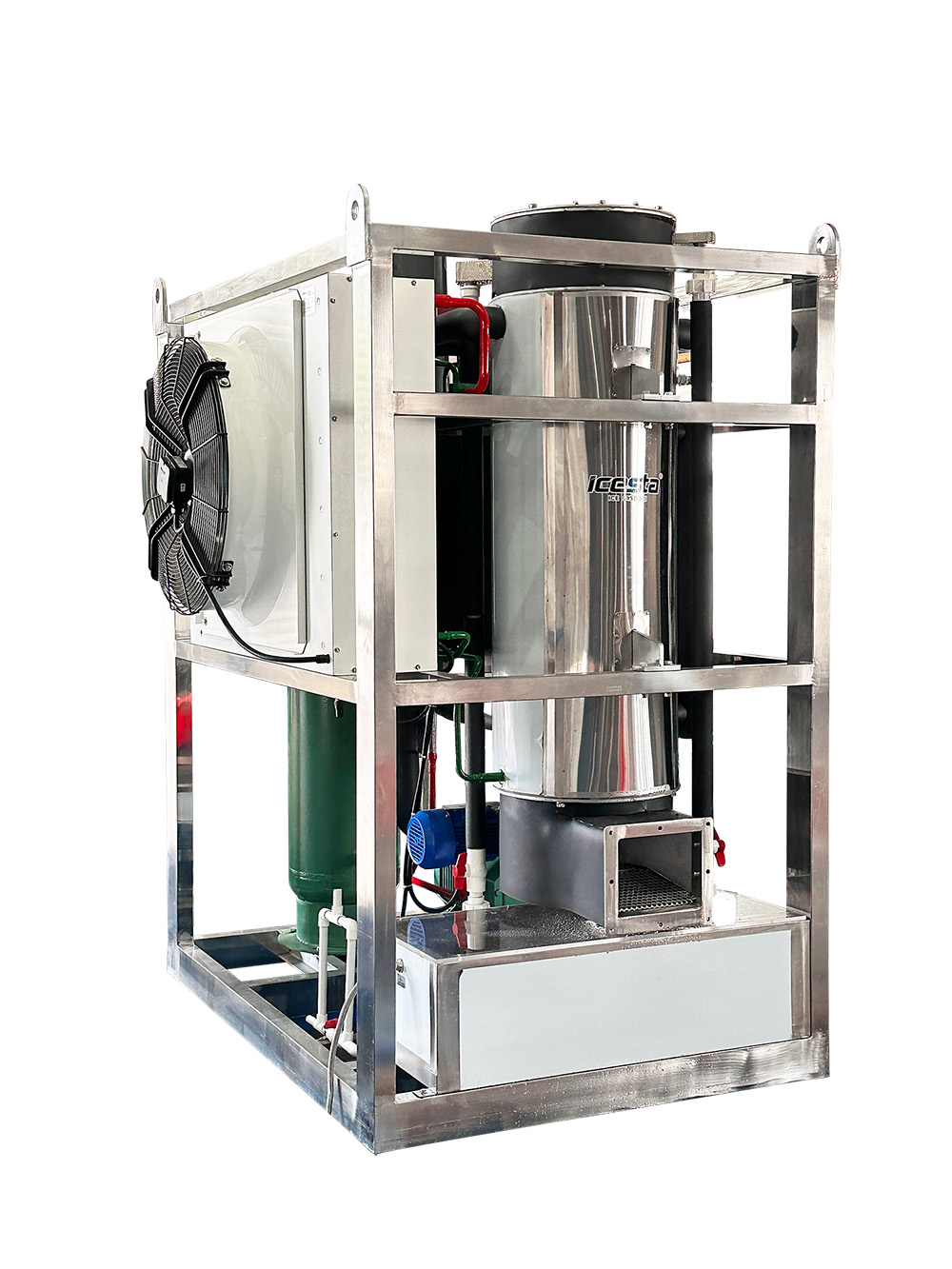
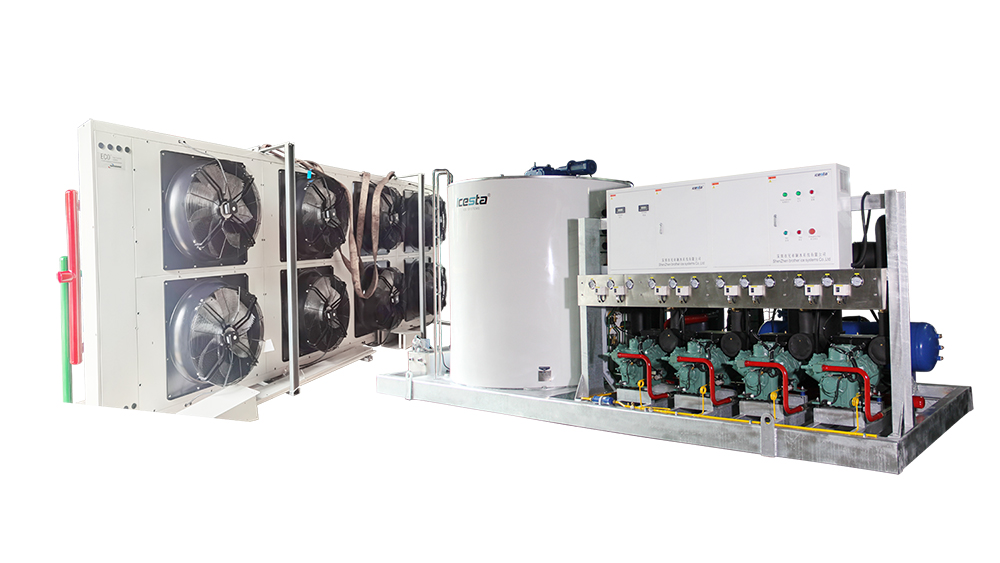
Water-Cooled Ice Machines
The water-cooled ice machine operation depends on water for taking heat from refrigerant moving through condenser coils. The water transports the generated heat away from the ice machine while utilizing cooling towers or heat exchange devices. Operating in hotter climates becomes more efficient through the use of water as heat capacity of water exceeds air's capacity. The water-cooled system operates with unvarying cooling capability across all temperature ranges thus being perfect for intense usage areas. Operational costs for water-cooled systems become higher because they need a consistent water supply. Water-cooled machines pose environmental challenges to water availability due to their boosted water consumption levels thus diminishing their applicability in dry areas (Energy, 2021)
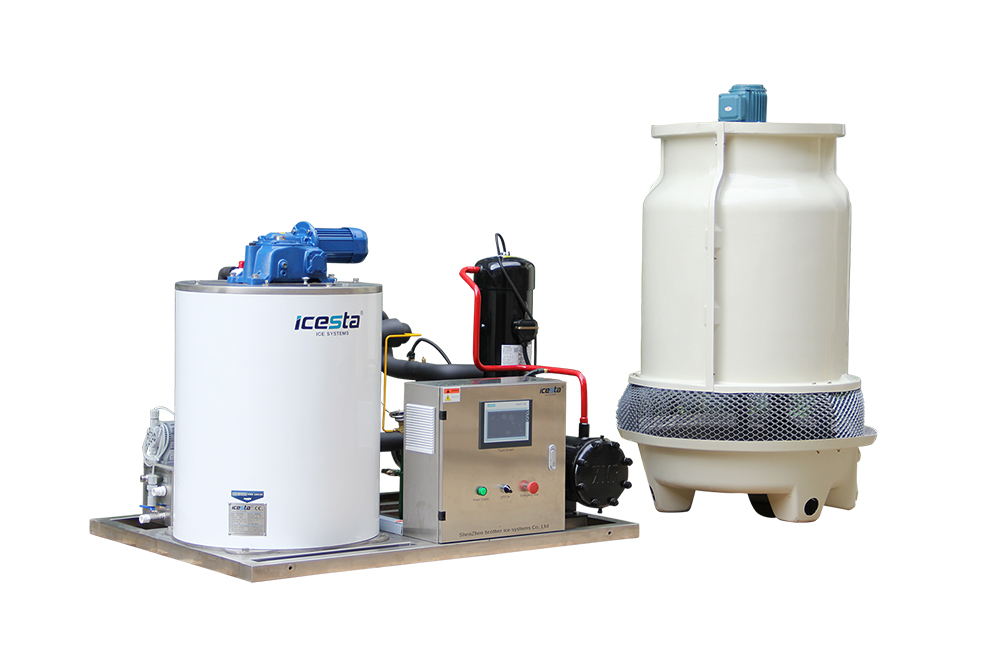
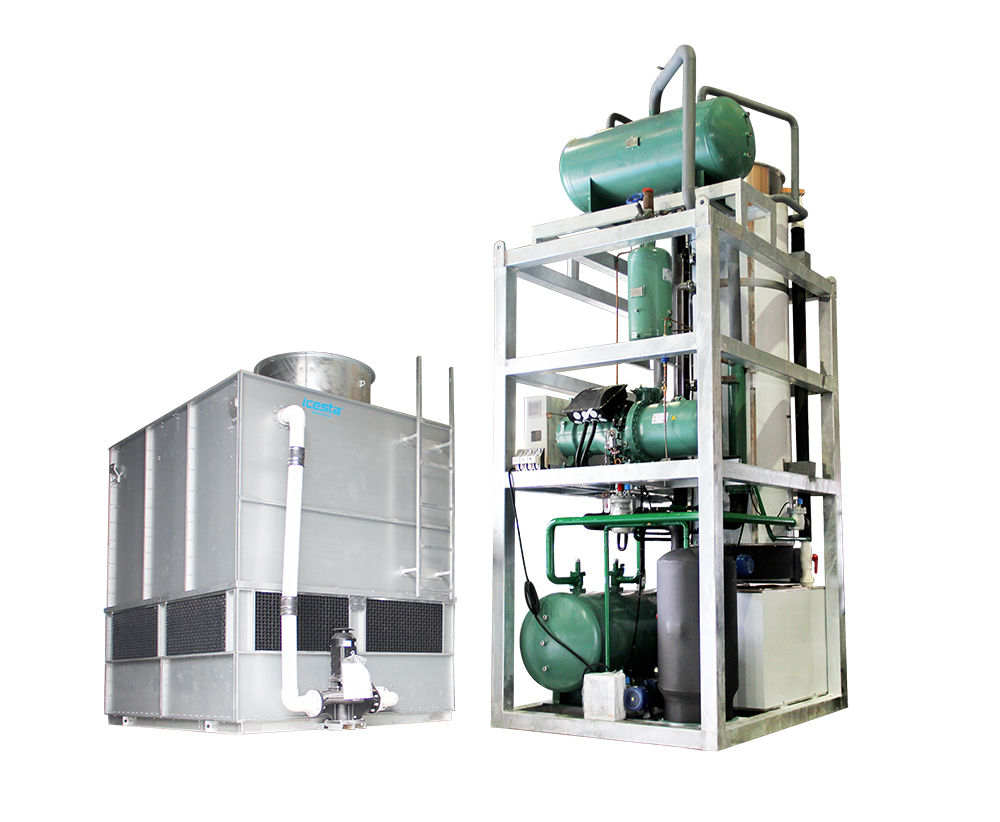
Efficiency and Performance
The performance level of ice machines depends on their structure and the surrounding operational conditions (EasyIce, 2024).
· The fans in air-cooled ice machines transfer heat energy from condenser coils out into the surrounding air. The operating performance of these devices directly relates to external air temperature because hotter environmental conditions reduce the cooling capabilities thereby increasing power usage. The development of ENERGY STAR certified air-cooled ice makers makes these units 20% better at water usage and 10% more efficient than basic models. The energy-efficient variant of ice makers offers savings of up to $75 and 700 kWh each year that carries a lifetime savings potential of $660.
· Water-cooled ice machines use water as a heat-absorbing medium for condenser coils that is afterward released through cooling towers or heat exchangers. Such machines maintain a steady output operation through all weather conditions thanks to their insulation from temperature changes in the environment. Organizations that operate cooling towers throughout the entire year should select these machines since they need ongoing water access yet delivery water directly to the condenser coils for optimal performance. Devices need proper maintenance because scale accumulation will reduce their performance capabilities.
Environmental Impact
The environmental footprint of ice machines depends on their cooling system because
· Water efficiency stands high among the features of Air-Cooled Machines because they need much less water when producing ice units compared to other models. The water consumption of ENERGY STAR certified air-cooled ice makers reaches between 15 to 25 gallons to produce 100 pounds of ice depending on various factors (LADWP, 2024)
· Despite operating using less power water-cooled machines require an increased amount of water which leads to environmental concerns. Cooling towers for water management serve as essential equipment to prevent significant water loss when operating these machines (practicegreenhealth, 2013).
Maintenance and Durability
The two systems have separate maintenance needs which should be considered:
· Air-Cooled Machines call for consistent air filter and condenser coil cleansing to function at maximum efficiency level. Air-conditioning units located within grinding or oily environments need regular servicing due to their installation conditions (LADWP, 2024).
· The maintenance requirements for water-cooled machines involve constant water quality checks to stop scale deposits and corrosion which could corrupt the system. The machine needs appropriate water filtration methods as well as treatment solutions to maintain its operational capabilities and reach maximum lifespan (Energy, 2021).
Cost Considerations
Unlike each other the initial prices alongside running expenses operate differently in these two systems (Ironmountain, 2024):
· Generally speaking, air-cooled ice machines prove more affordable than their water-cooled counterparts in every aspect of their cost effectiveness. Air-based cooling units have lower initial costs and installation expenses along with minimum operation expenses. You can find air-based units which cost less compared to other products on the market. The ice maker can operate in various locations which makes it a preferred choice. The purchase of an Energy Star-rated unit helps minimize operational costs yet proper placement of the ice machine is essential to achieve maximum energy savings.
· Installation of water-cooled ice makers needs additional equipment to make them functional which leads to higher purchase expenses. Certain geographical areas prohibit water-cooled ice makers thus resulting in diminished manufacturer interest. Excessive water consumption during operations turns water-based cooling systems into costlier choices compared to standard areas of operation.
Regulatory and Sustainability Considerations
The selection of an ice machine gets directed by both regulations and sustainability goals (docs.lib.purdue.edu) (aceee.org (practicegreenhealth.org).
· The implementation of air-cooled machines proves beneficial because regions favor these systems which reduce water usage for water conservation programs. The implemented ENERGY STAR® and other certification programs prefer choosing air-cooled equipment because of its superior energy efficiency status (Fisher, Cowen, Karas, & Spoor, 2012).
· Areas that prioritize water conservation have established strict rules against using water-cooled machines and the installation may require permission from authorities. Local guidance together with environmental impact assessment must be checked before moving forward with installation.
Conclusion
The selection between air-cooled and water-cooled industrial ice machines relies on three key elements which are environmental conditions and water resources and the time necessary for maintenance. Users can maintain air-cooled machines without much difficulty plus they help conserve water while water-cooled machines deliver energy cost savings in appropriate climate zones. Organizations need to assess their operational requirements and local circumstances to decide on the best affordable and performance-based solution. Put your trust in ICESTA, a top Industrial Ice Machines Supplier, to deliver customized ice solutions that address both your operational and environmental concerns.
References
EasyIce. (2024). The Difference Between Air-Cooled and Water-Cooled Ice Machines. Retrieved from www.easyice.com: https://www.easyice.com/difference-between-air-cooled-and-water-cooled-ice-machines/
Energy. (2021). Purchasing Energy-Efficient Water-Cooled Ice Machines. Retrieved from www.energy.gov: https://www.energy.gov/femp/purchasing-energy-efficient-water-cooled-ice-machines
Fisher, D., Cowen, D., Karas, A., & Spoor, C. (2012). Commercial ice machines: the potential for energy efficiency and demand response. Proceedings of the ACEEE 2012 Summer Study on Energy Efficiency in Buildings.
Ironmountain. (2024). Air-Cooled vs. Water-Cooled Ice Machine: Which Is Right For Your Business? Retrieved from ironmountainrefrigeration.com: https://ironmountainrefrigeration.com/2024/12/18/air-cooled-vs-water-cooled-ice-machine/
Koeller, J., & Hoffman, H. (2008). Evaluation of Potential Best Management Practices - Commercial Ice Machines. Retrieved from calwep.org: https://calwep.org/wp-content/uploads/2021/03/Commercial-Ice-Makers-PBMP-2008.pdf
LADWP. (2024). Save Water with Air-Cooled Ice Machines. Retrieved from www.ladwp.com: https://www.ladwp.com/publications/newsletters/articles/save-water-air-cooled-ice-machines
practicegreenhealth. (2013). Suggested Environmental Considerations for Ice Machines and Water Coolers. Retrieved from practicegreenhealth.org/: https://practicegreenhealth.org/sites/default/files/2019-03/suggested_environmental_considerations_for_ice_machines_and_water_coolersv4.pdf